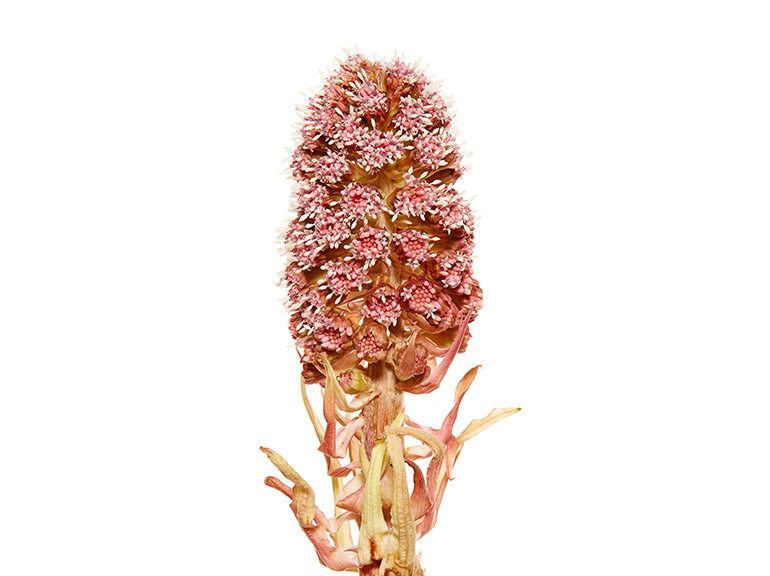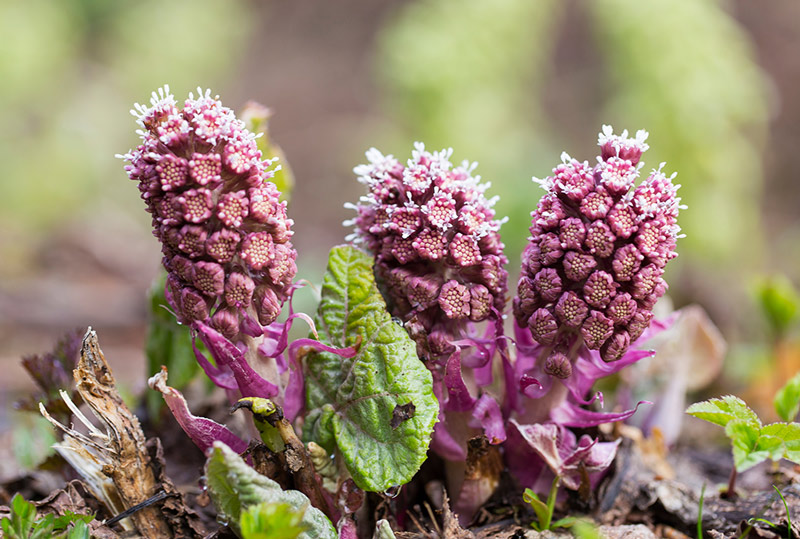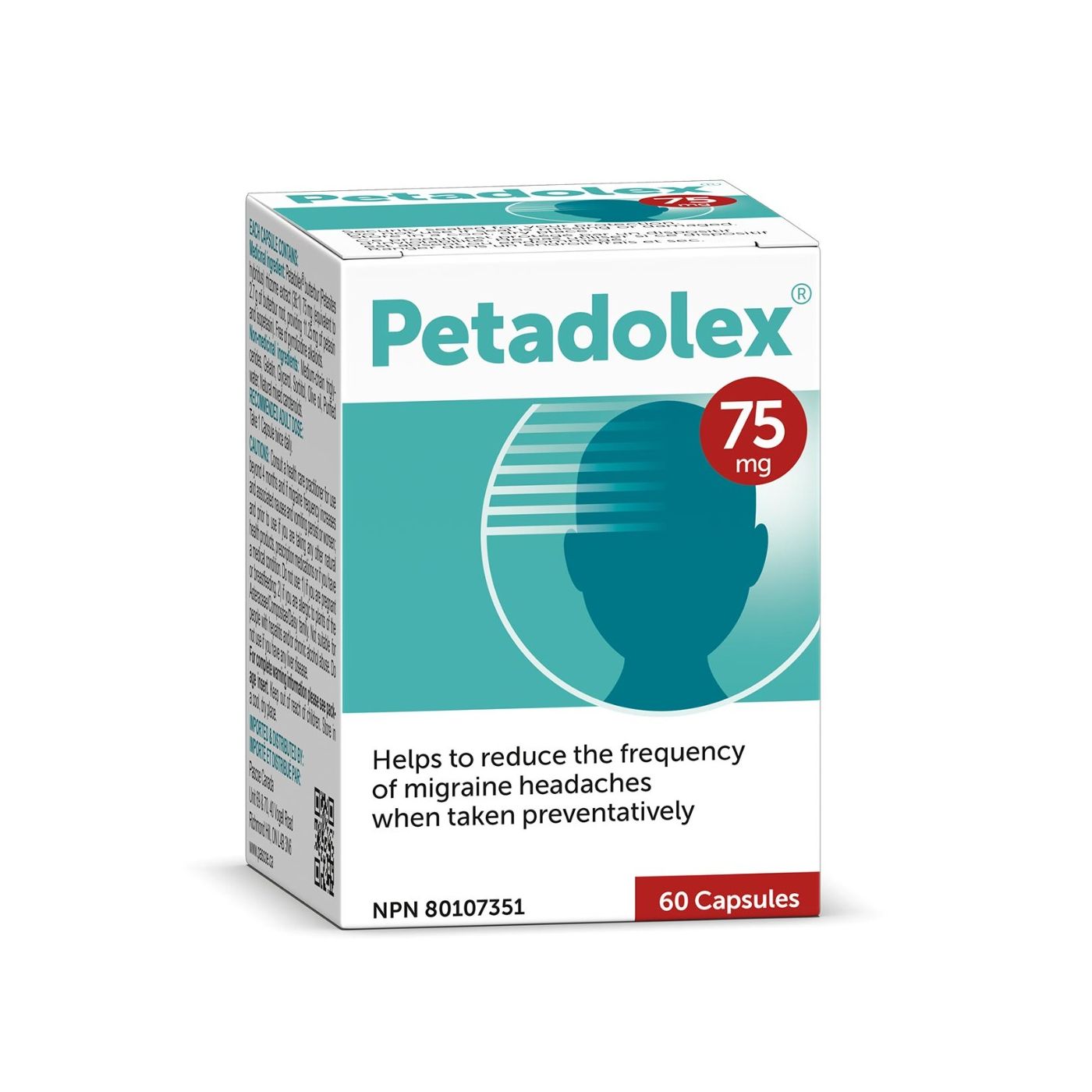Thyme


Butterbur (Petasites hybridus)
Butterbur (Petasites hybridus) is a shrub native to Europe and temperate parts of Asia. Extracts from the leaves and roots of the butterbur plant have been used as medicine for many centuries. For the health benefits of butterbur, the plant was also introduced to North America. Today, you can find it in many parts of the US along rivers, streams and in marshy areas.
In the Middle Ages, the plant was used to help with the plague and fever. Traditional uses also included wounds, snakebites, coughs, and asthma. But Butterbur extracts were also used for allergies, upset stomachs, urinary tract pain, and muscle spasms.
Nowadays, the plant is best known as a treatment for hay fever (allergic rhinitis) and to prevent migraines. Butterbur extract is mostly available in capsule form.
You can also find the medicinal plants in some gardens where their large leaves create a dense ground cover.
The Petasites genus belongs to the Asteraceae or daisy family. It is also known as butterburs or coltsfoots.
There are several Petasites species with Petasites hybridus being the one used the most for herbal remedies. It contains two active compounds called petasin and isopetasin.
Petasites hybridus is the common purple butterbur, but also known as European butterbur in North America. Other scientific names are Petasites officinalis, P. vulgaris, and Tussilago hybrida. The plant is also known as pestilence wort, which refers to its former use against the plague, and butterfly-dock.
The plant parts used in herbal or dietary supplements are the leaves and the roots. While its leaf extract is used for hay fever, butterbur extract for migraines is made from the root of the plant.


Petasites japonicusis is called bog rhubarb, fuki, or giant butterbur for its enormous leaves. It has been used in cooking and traditional Chinese medicine.
For its clusters of white blooms, Petasites albus is known as white butterbur.
Petasites fragrans has tiny fragrant mauve-pink flowers that start blooming in winter and provide insects with nectar. However, like all Petasites, the plants spread quickly by their underground stems and are difficult to contain.
What does the plant look like?
Butterbur plants are flowering perennials. Their flowers appear in early spring before the leaves and can often last into May. They form large, heart-shaped leaves that are smooth on the surface but hairy below.
P. hybridus can grow up to 90-120 cm tall stems that carry leaves that are up to 60 cm in diameter. The flowers are pink to purple and clustered in dense spikes. Male and female flowers are found on separate plants.
The plants readily propagate by creeping underground stems called rhizomes.
Where does the name come from?
The common name butterbur is supposed to come from the past use of the large leaves. They were used to wrap butter for storage.
The scientific name Petasites is thought to come from the Greek word petasos. It means a broad-brimmed hat and refers to the size and shape of the leaves.
Butterbur’s health benefits have been known for hundreds of years. Butterbur root extracts and extracts from its leaves have relieving effects on muscle spasms and pain. This explains the plant’s long-standing usage for respiratory conditions, headaches, and cramps in the urinary and digestive tract.
Current research suggests that butterbur is effective in the treatment of migraines and might help with allergic rhinitis.
Two RCT clinical trials tested the efficacy of the standardized butterbur extract (Petadolex) as a treatment for migraines. They found that it significantly reduced the number of migraine attacks compared to a placebo.
The studies reported only a few side effects of butterbur. The most common Petadolex butterbur side effects involved GI complaints, such as burping.
However, the plant naturally contains chemicals called pyrrolizidine alkaloids or PAs. PAs are harmful to humans and animals and can damage the liver. Therefore, you should never use fresh or dried plants yourself.
The extract used in butterbur products must be processed and purified to remove all traces of PAs. When using butterbur for migraines or other conditions, it is very important to verify that the butterbur extract is PA-free. Only butterbur products certified as PA-free should be considered for use.
Butterbur, as well as magnesium citrate, riboflavin, and coenzyme Q10, are recommended by the Canadian Headache Society for migraine prevention. They point out that these products are well tolerated, but also that only PA-free butterbur products should be used.
Several studies have safely used Petadolex, a PA-free butterbur product for migraine, for up to 16 weeks. These include a few studies of children and adolescents. The typical butterbur dosage for migraines used in the studies was 100-150 mg per day taken in 2-3 separate doses.
Medicinal Properties of Butterbur
Benefits of butterbur supplements include:
- anti-inflammatory (helps with inflammations)
- antispasmodic (relieves spasms)
- vasorelaxant (relaxes blood vessels) effects.
How and what is it used for?
Current uses of butterbur extract include hay fever, urinary tract symptoms, painful menstruation, and respiratory and digestive conditions. Most butterbur products are available in softgel form.
The Canadian Headache Society recommends butterbur for migraine prevention.
How much butterbur for migraine prevention?
In their guideline, the Canadian Headache Society recommends taking 75 mg of butterbur twice daily. They also recommend butterbur products with standardized extracts that contain a minimum of 15% of petasins, the active compounds.
The main active compounds of butterbur extracts are petasin and its isomer form isopetasin. These bitter-tasting substances belong to a group called petasins.
Test tube and animal studies found that these petasins relax blood vessels and different smooth muscles in the body. They are also known to reduce inflammation.
Petasins seem to inhibit the release of certain messenger substances that play an important role in inflammation. Recent research suggests that they also desensitize specific channels that are found in many human cells. These channels are linked to various physiological mechanisms like gut motility, inflammation, or pain.


It is known that inflammation and ion channels are involved in the formation of migraine attacks. However, the exact mode of action of the petasins is not known yet.
Its preventative use is undoubtedly one of the main butterbur benefits and side effects are usually uncommon and mild.
However, since the plant also contains certain harmful compounds, you should only use products certified as PA-free.
PA-free butterbur is generally well tolerated. However, some people might experience some mild side effects. These include belching, upset stomach, diarrhea, headache, fatigue, and itchy eyes.
Butterbur can cause allergic reactions if you are sensitive to plants of the daisy family, such as ragweed, chrysanthemums, or marigolds. In this case, discontinue use.
Butterbur products should not be used during pregnancy or while breastfeeding as there are no safety data available.
Butterbur is also not suitable for people with hepatitis, any liver disease, or chronic alcohol abuse. Stop using and see your doctor if you develop symptoms of liver trouble. These include yellowing of eyes or skin, stomach pain, dark urine, sweating, nausea, unusual tiredness, or loss of appetite.
You should also talk to your doctor if the treated condition persists or worsens.
For long-term use of butterbur beyond 4 months seek medical advice from your doctor. However, it is always recommended to talk to your healthcare practitioner before starting any herbal or other remedies.
Also, make sure to look for a trusted brand to find the best butterbur for migraines or other conditions.
Disclaimer
Pascoe Canada does not offer health or medical advice as we are not a healthcare practitioner. Please speak with your healthcare practitioner before beginning any program related to nutrition, diet, exercise, fitness, medical, and/or wellness. All content published by Pascoe Canada is developed through collaborating with licensed medical professionals and contributors. This includes text, graphics, images, and other material on the website, newsletter, and products (“Content”). This content is for informational purposes only and does not constitute medical advice. The content does not substitute professional medical advice, diagnosis, or treatment. Please always do your own research on whether this is for you along with your healthcare practitioner advice. Always consult your healthcare practitioner prior to use specific herbs because you might have underlined conditions needs professional care. The content is general in nature and are subject to change. It is not intended to cover all possible uses, directions, precautions, warnings, drug interactions, allergic reactions, or adverse effects.


